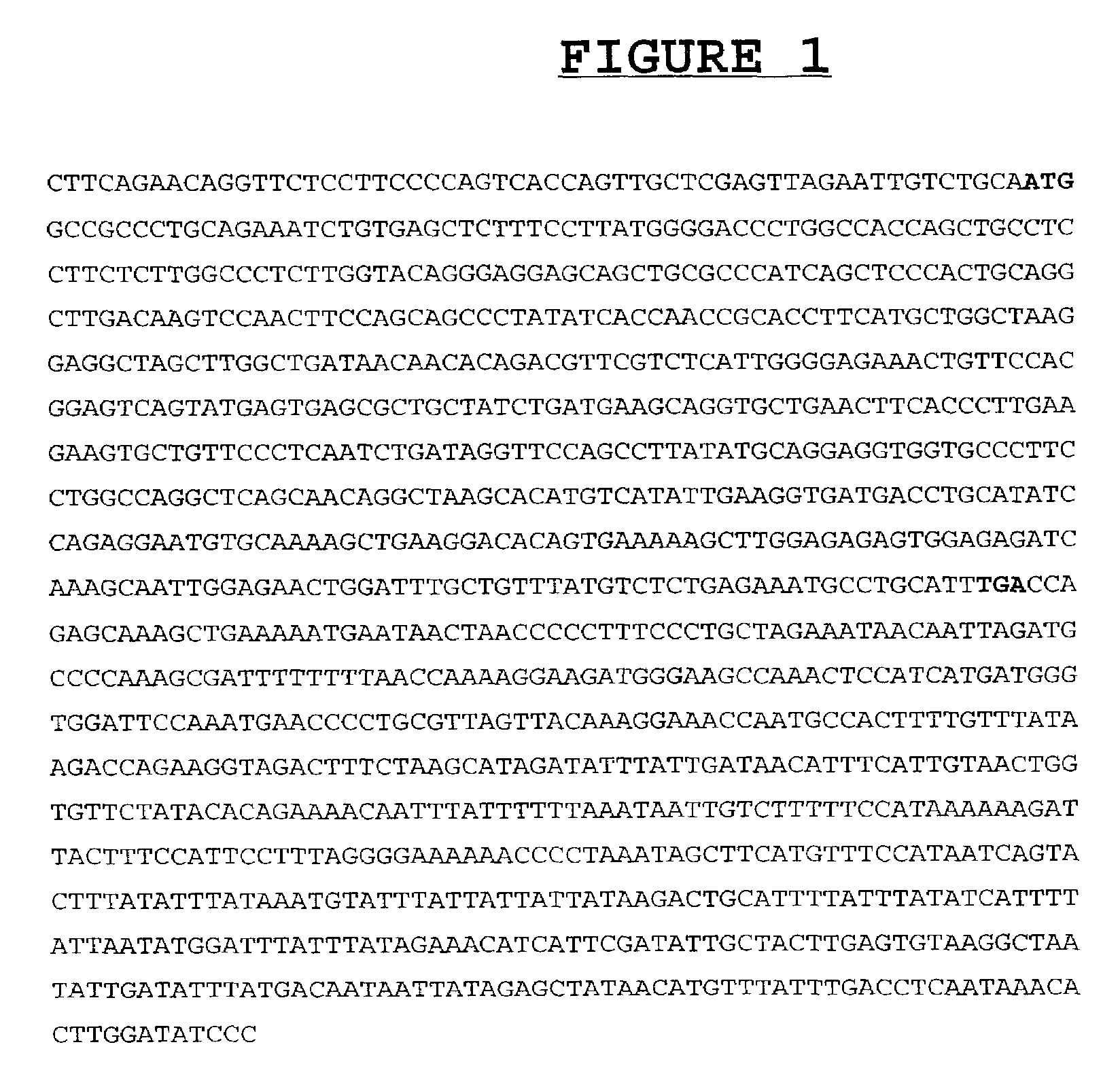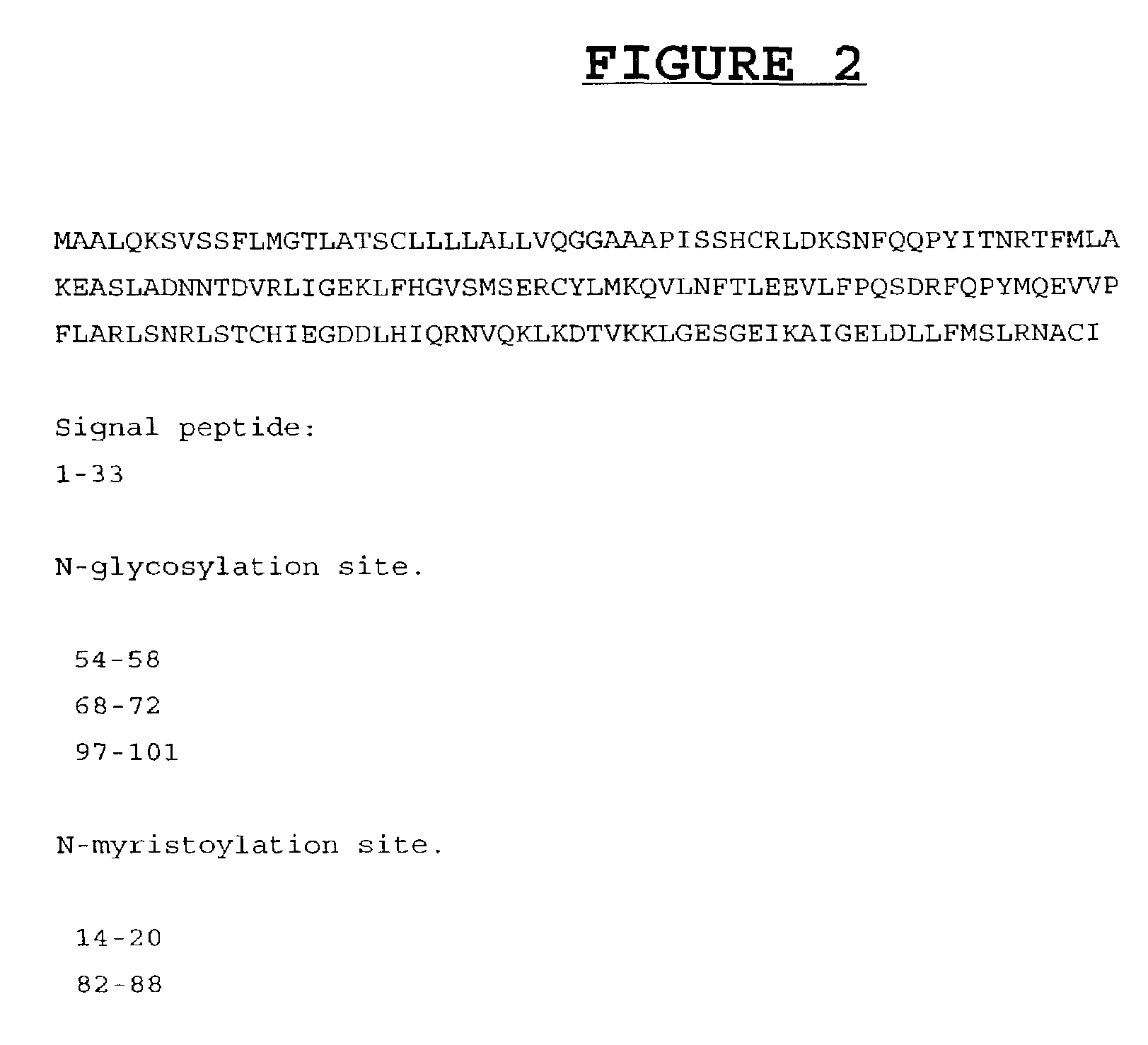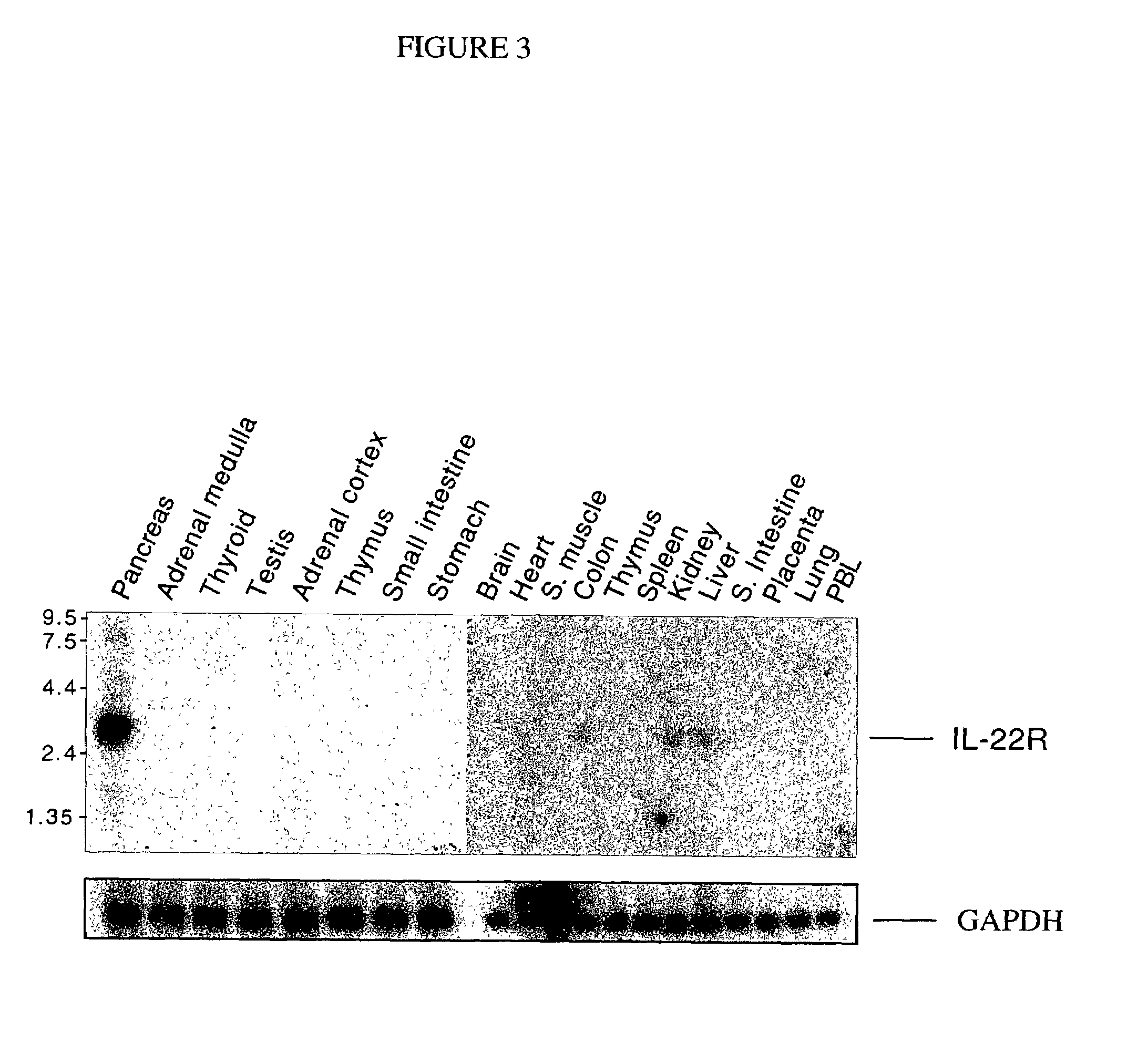Interleukin-22 polypeptides, nucleic acids encoding the same and methods for the treatment of pancreatic disorders
a technology of interleukin-22 and nucleic acids, applied in the field of identification and isolation of interleukin22 (il22) and to the methods of treatment of pancreatic disorders, can solve the problems of tissue damage, life-threatening, damage to the pancreas, etc., and achieve the effect of reducing or inhibiting the expression of il-22
- Summary
- Abstract
- Description
- Claims
- Application Information
AI Technical Summary
Benefits of technology
Problems solved by technology
Method used
Image
Examples
example 1
Cloning of IL-22
[0249]Interleukin-22 (DNA125185-2806) was identified by applying a proprietary signal sequence finding algorithm developed by Genentech, Inc. (South San Francisco, Calif.) upon ESTs as well as clustered and assembled EST fragments from public (e.g., GenBank) and / or private (LIFESEQ®, Incyte Pharmaceuticals, Inc., Palo Alto, Calif.) databases. The signal sequence algorithm computes a secretion signal score based on the character of the DNA nucleotides surrounding the first and optionally the second methionine codon(s) (ATG) at the 5′-end of the sequence or sequence fragment under consideration. The nucleotides following the first ATG must code for at least 35 unambiguous amino acids without any stop codons. If the first ATG has the required amino acids, the second is not examined. If neither meets the requirement, the candidate sequence is not scored. In order to determine whether the EST sequence contains an authentic signal sequence, the DNA and corresponding amino ...
example 2
Identification of Receptor / Ligand Interactions
[0253]In this assay, various IL-22 polypeptides are tested for ability to bind to a panel of potential receptor or ligand molecules for the purpose of identifying receptor / ligand interactions. The identification of a ligand for a known receptor, a receptor for a known ligand or a novel receptor / ligand pair is useful for a variety of indications including, for example, targeting bioactive molecules (linked to the ligand or receptor) to a cell known to express the receptor or ligand, use of the receptor or ligand as a reagent to detect the presence of the ligand or receptor in a composition suspected of containing the same, wherein the composition may comprise cells suspected of expressing the ligand or receptor, modulating the growth of or another biological or immunological activity of a cell known to express or respond to the receptor or ligand, modulating the immune response of cells or toward cells that express the receptor or ligand,...
example 3
Expression of IL-22 Receptor in Multiple Human Tissues
[0259]Multiple tissue Northern Blots were obtained from Clontech (Palo Alto, Calif.). These blots were hybridized with a probe made by end labeling a 50-mer IL-22 receptor specific oligonucleotide using 32P-γATP and T4 polynucleotide kinase. Blots were washed 3× with 2×SSC / 0.2%SDS and 1× with 0.2×SSC / 0.1% SDA at 42 C. The blots were then exposed to X-OMAT film with intensifying screens for 16 hours. The result is shown in FIG. 3. This shows that IL-22 receptor is expressed highly in pancreas, with lower level of IL-22 receptor observed in small intestine, liver, kidney and colon.
PUM
 Login to View More
Login to View More Abstract
Description
Claims
Application Information
 Login to View More
Login to View More - R&D
- Intellectual Property
- Life Sciences
- Materials
- Tech Scout
- Unparalleled Data Quality
- Higher Quality Content
- 60% Fewer Hallucinations
Browse by: Latest US Patents, China's latest patents, Technical Efficacy Thesaurus, Application Domain, Technology Topic, Popular Technical Reports.
© 2025 PatSnap. All rights reserved.Legal|Privacy policy|Modern Slavery Act Transparency Statement|Sitemap|About US| Contact US: help@patsnap.com



